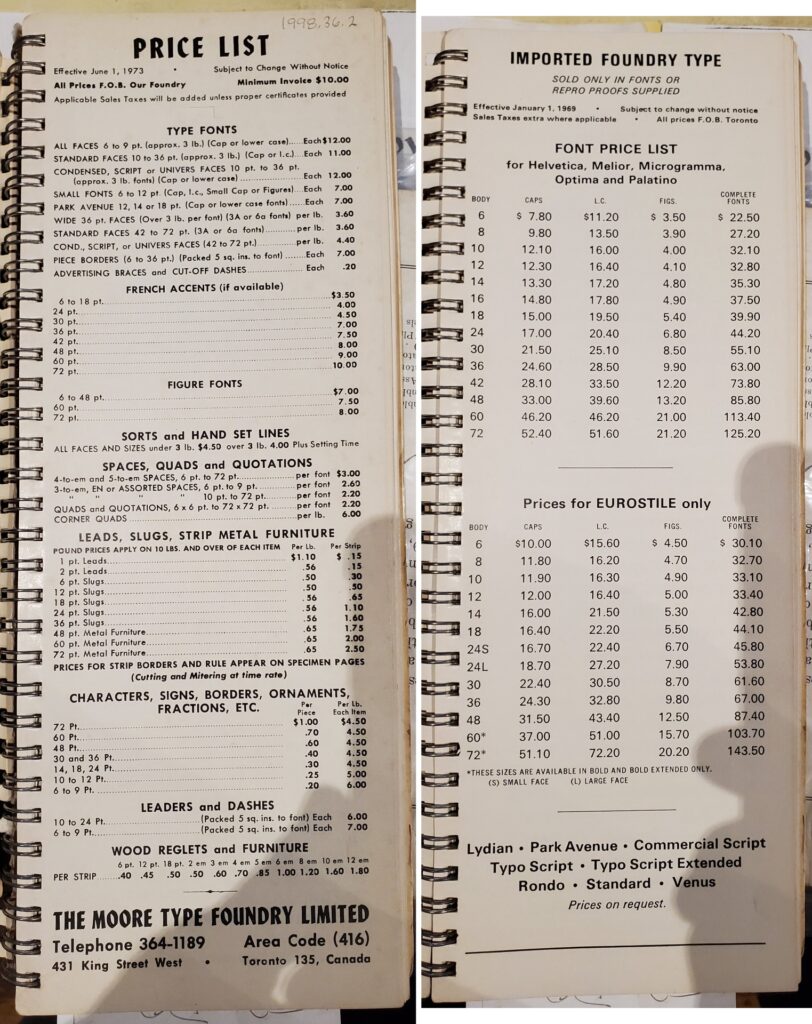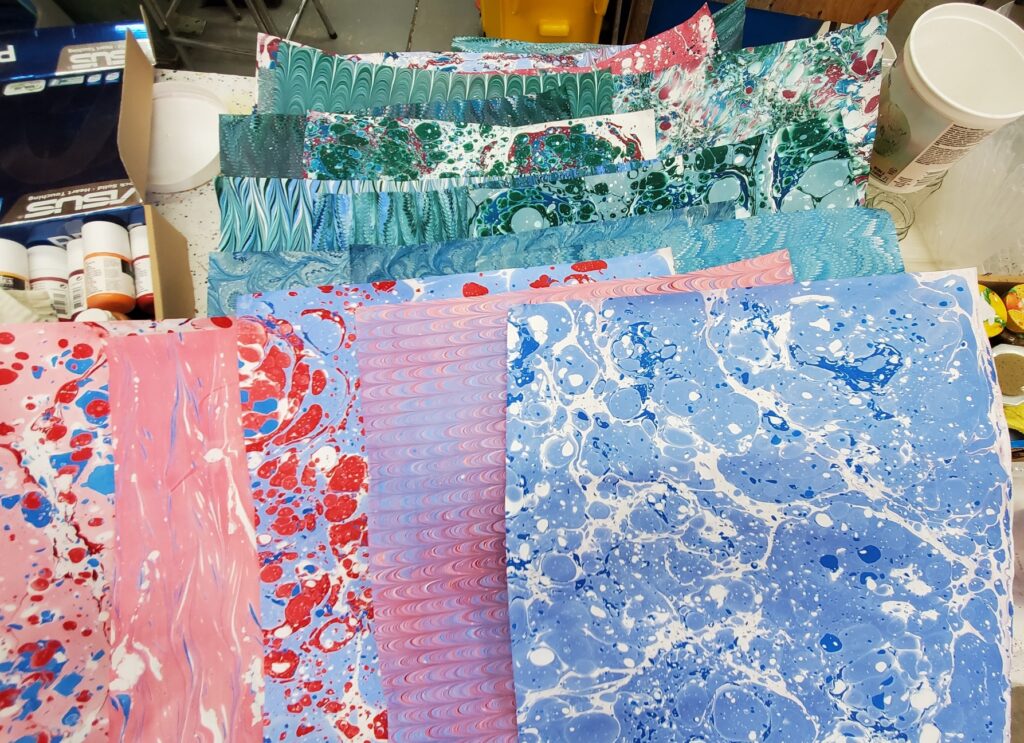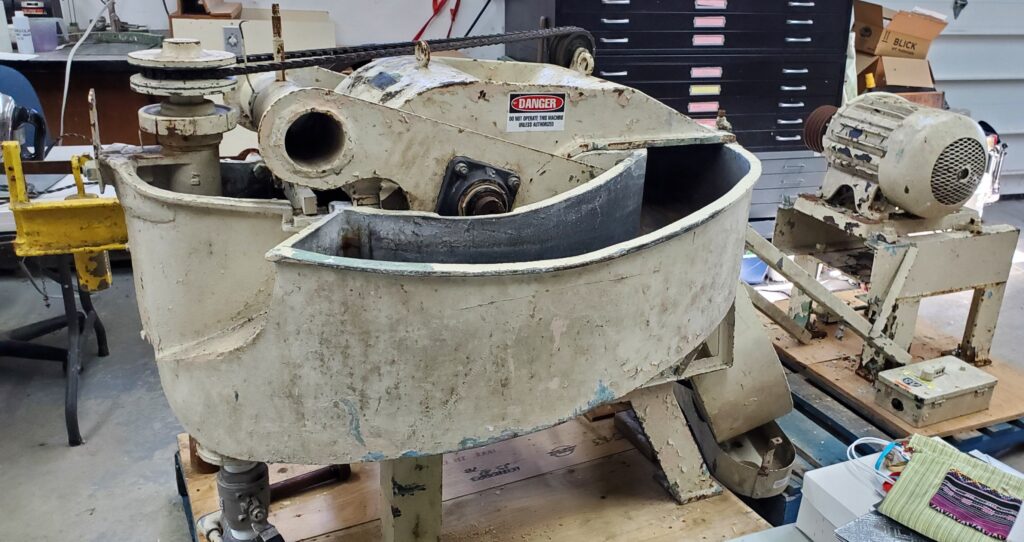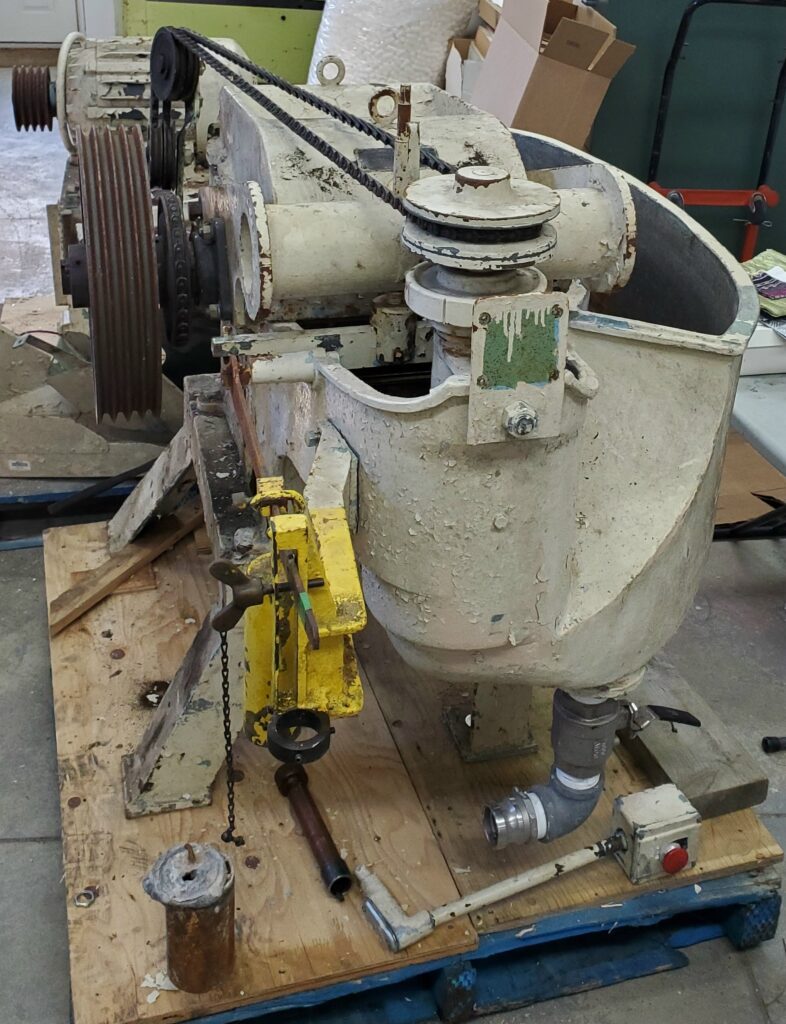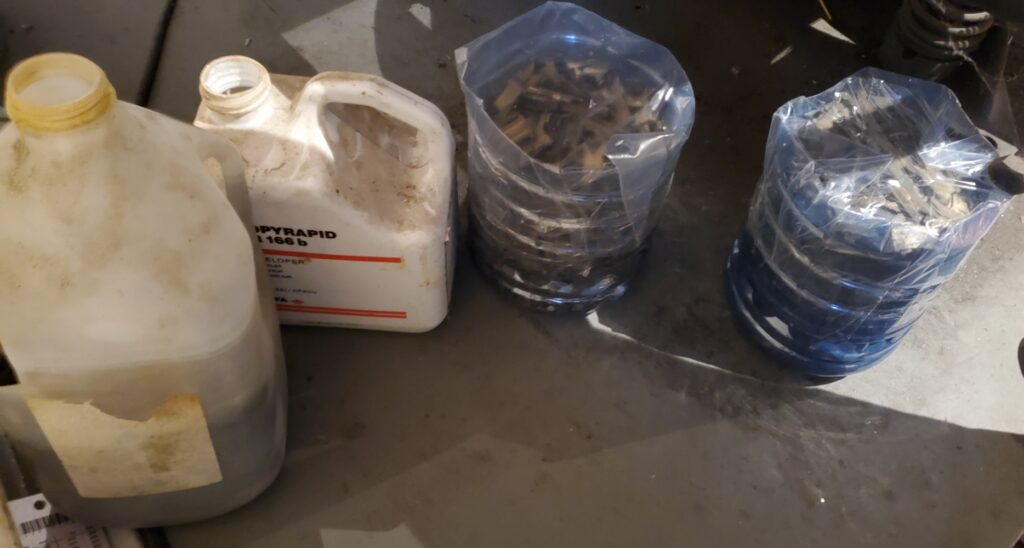One of the moulds for my Monotype Composition Caster, specifically the type U Lanston display mould fitted for 36 point body size, had completely blocked cooling water passages. This would seriously limit how fast the caster could run, even more so than the already slow speeds recommended for such large type.
There is a tool which can be attached to the underside of a mould, which fits two small cylinders to the cooling water ports, allowing one to install a small piston and, by striking this with a hammer, force liquid through the cooling passages under high pressure. This is often useful for minor blockages, but seemed to have no effect on this particular mould.
In order to clear out the passages, I disassembled the mould well beyond the recommended amount, even removing the intermediate base from the main base. This is not a recommended procedure because it loses the factory-set alignments of the parts. It is, however, the only way to reach all the water passages, or at least to understand how they are connected. Now that I know their layout I may find it possible to clean them without this extreme disassembly.
In the process I’ve mapped out the water and oil passages, something to be documented in a future post perhaps.
The cooling passages are a series of drilled holes that intersect within the parts of the mould, with brass screws plugging most of the drill entry holes. Together these holes join to form a continuous single path for water flow through the mould.
Clearing the passages involves drilling into them as was done at the factory, but this time the drill removes the blockage (probably mostly consisting of iron oxides and old oil) rather than steel. Unfortunately, most of the brass screws were either filed flush to the surrounding surface and so had no screwdriver slot any more, or were sufficiently seized in their holes, that they had to be drilled out too.
This leaves the problem of replacing the screws, the main point of this post. Read more ›

